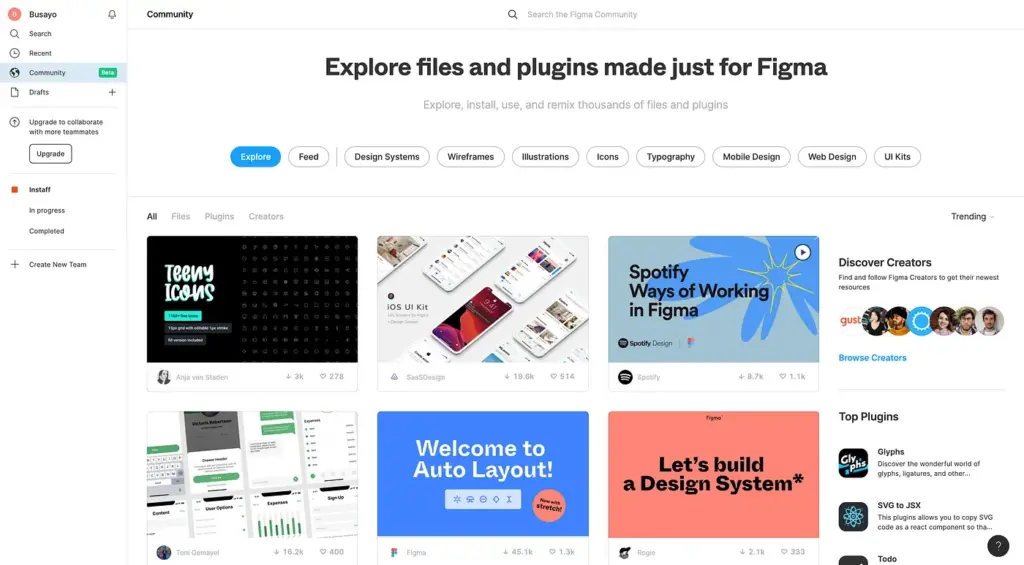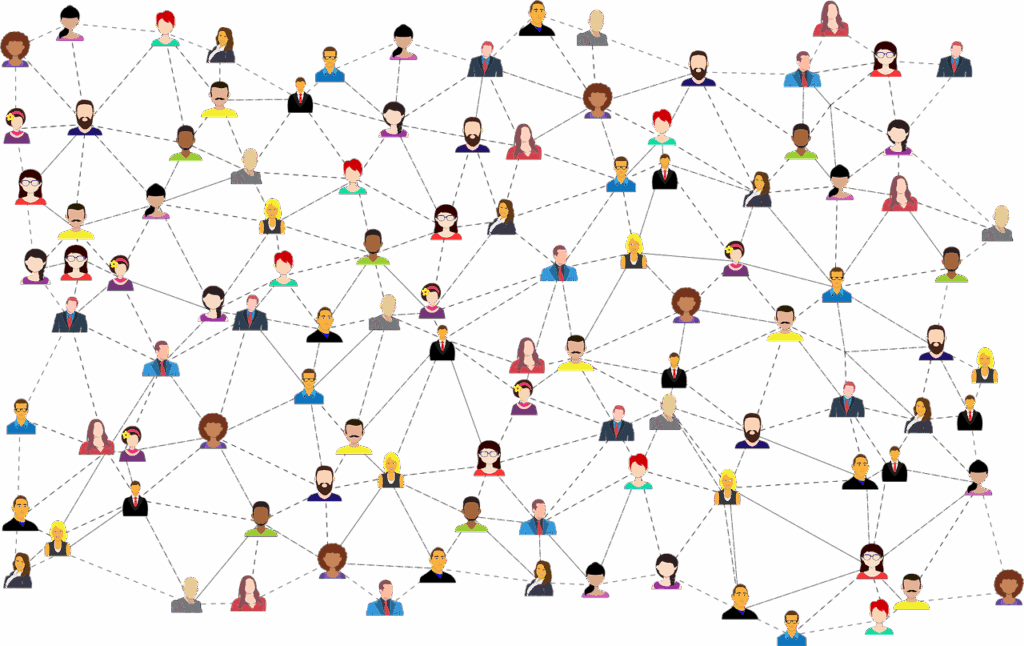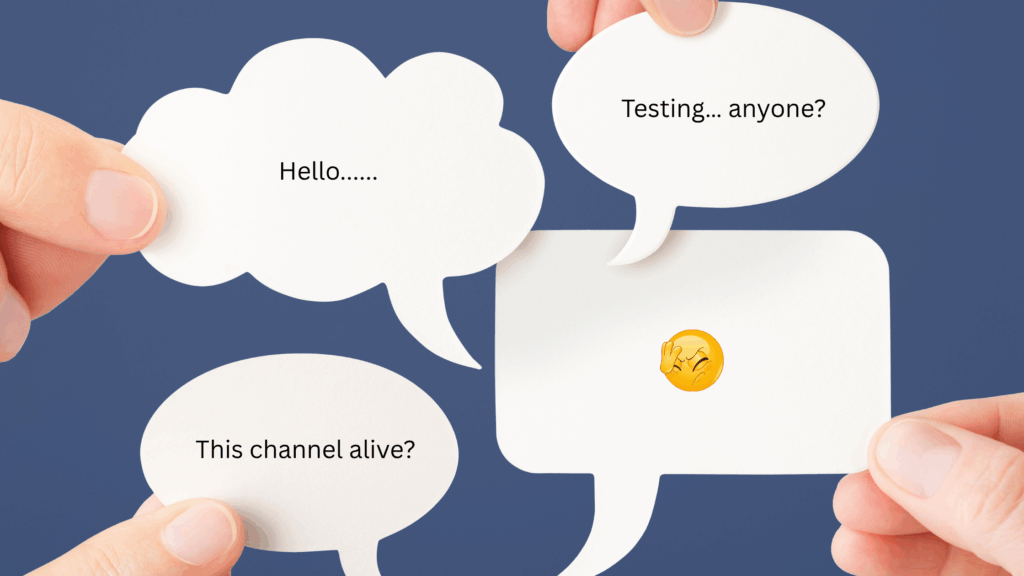Here’s a scenario you might recognize:
You’ve got a Slack workspace with 847 members. Your Discord sees daily activity. You’re running monthly webinars. Leadership asks: “What’s this community actually doing for us?”
And you realize…you’re not entirely sure.
This is the problem with most community efforts. Lots of activity. Lots of energy. But no clear line between “people are talking” and “business is growing.”
At Stateshift, we’ve worked with 250+ tech companies to fix this exact problem. The best practices for community-led growth come down to five systematic approaches: aligning community to business outcomes, building structured onboarding, creating contribution ladders, amplifying content strategically, and measuring what actually drives revenue.
When implemented correctly, these practices reduce customer acquisition costs by 40-60% while increasing lifetime value through peer-driven advocacy.
The solution isn’t working harder…it’s building better systems.
What Community-Led Growth Actually Means
Community-led growth is a systematic go-to-market approach where your users, developers, and advocates actively drive product adoption, reduce acquisition costs, and accelerate feedback loops through structured engagement.
Unlike traditional marketing that broadcasts messages, community-led growth creates network effects. Your best users recruit peers. Contributors create educational content. Advocates amplify your message organically.
Through our work with hundreds of implementations, we’ve seen companies achieve 40-60% lower customer acquisition costs while maintaining higher lifetime value. But most teams treat community as a side project instead of a growth engine.
Community-Led Growth vs. Other Growth Models
Let’s put this in perspective:
| Growth Model | Primary Driver | Key Strength | Example Brands |
|---|---|---|---|
| Sales-Led | Sales team relationships | High-touch enterprise deals | Salesforce, Oracle |
| Product-Led | Self-serve product | Scalable activation | Zoom, Calendly |
| Community-Led | User advocacy and peer learning | Organic growth, low CAC | GitHub, Figma, Airtable |
The smartest companies layer these approaches. But community-led growth creates something unique: compounding returns that continue growing even when you’re not actively pushing.
Why Community-Led Growth Works: The Five Core Benefits
We’ve identified five business advantages that make community-led growth effective:
Lower Customer Acquisition Costs
When community members recruit peers, create tutorials, and share success stories, acquisition happens organically. One client we worked with tracked this carefully: their community-driven signups cost 70% less than paid channels and converted at higher rates.
Faster Activation Through Peer Learning
Developers trust other developers more than marketing materials. When new users see community members solving problems and sharing workflows, they reach their “aha moment” faster. Companies implementing our structured community onboarding reduce time-to-activation by 40-60%.
Support That Scales Naturally
Active communities answer questions, share solutions, and troubleshoot issues. This peer-powered support scales as the community grows, unlike traditional support requiring linear headcount increases.
Real-Time Product Feedback
Your community surfaces bugs, requests features, and reveals unexpected use cases faster than any formal research program. This real-time feedback loop accelerates product development.
Network Effects That Compound
Strong communities create flywheels. Engaged users attract similar users. Contributors become advocates. Content accumulates. Unlike campaigns that end, community value compounds over time.
Real Companies Implementing Community-Led Growth
GitHub: Building the World’s Developer Community

GitHub built the infrastructure for developer collaboration worldwide. Through open source communities, discussions, and contributions, they created a space where developers naturally gather, share, and learn.
What they did right:
- Made collaboration the core product experience
- Created spaces (Issues, Discussions, PRs) that encourage peer interaction
- Recognized contributors publicly through profiles and activity graphs
- Built GitHub Stars program to empower developer advocates
Result: Network effects so strong that Microsoft acquired them for $7.5 billion.
Airtable: Empowering Creator Communities

Airtable built a movement of creators who share templates, workflows, and use cases. Their Universe (template gallery) turned users into teachers. Community forums became product education hubs.
What they did right:
- Made sharing templates and workflows incredibly easy
- Featured creative community use cases prominently
- Created ambassador and expert programs with real benefits
- Let community define what “no-code” could actually do
Result: Rapid adoption across non-technical teams, driven by peer recommendations and shared templates.
Figma: Designing Community Into the Product

Figma made community central to how the product works. Through Community Files, designers share UI kits, design systems, and resources openly. Real-time collaboration means teams naturally invite colleagues.
What they did right:
- Built sharing directly into product workflows
- Created spaces for community-created assets
- Hosted regular community events that felt valuable, not promotional
- Made it easy for users to teach each other
Result: Dominated the design tool market through network effects and community-powered adoption.
Duolingo: Making Learning Social

Duolingo‘s community features transformed language learning from solo grind to social experience. Forums, clubs, and social features let learners motivate each other and celebrate milestones.
What they did right:
- Built social features that felt natural, not forced
- Created systems for peer encouragement and accountability
- Made progress visible and shareable
- Used leaderboards and streaks to drive friendly competition
Result: Higher retention and daily active usage driven by social connections.
Five Essential Practices for Community-Led Growth
Based on our systematic approach with 250+ companies, here are the five practices that transform community activity into growth engines:
Practice 1: Align Community to Specific Business Outcomes
Alignment means connecting every community initiative to measurable business metrics, not vague goals like “engagement.”
Our alignment questions:
- Which specific business metric needs to move? (Activation? Retention? Expansion?)
- What user behaviors predict that outcome?
- How does community activity connect to those behaviors?
- Who owns proving this connection?
We worked with one client who had an active Discord but couldn’t justify investment. Through our Blueprinting process, we discovered their real problem: developers abandoned trials before completing first integrations.
Once aligned, every community initiative focused on that outcome. Office hours walked developers through integration challenges. Community members shared implementation approaches. Documentation improved based on real questions.
Result: Trial-to-paid conversion increased 40% in 90 days.
Practice 2: Build Structured Onboarding Systems
Our research shows that structured onboarding dramatically outperforms “welcome and hope” approaches.
The 30-Day Community Journey Framework:
| Timeline | Goal | What Happens | Success Metric |
|---|---|---|---|
| Days 1-3 | Quick Win | Complete first valuable action (tutorial, sample app, answered question) | 60% complete first action |
| Days 4-14 | Active Participation | Share use case, attend event, ask question | 40% return 3+ times |
| Days 15-30 | First Contribution | Answer question, share resource, provide feedback | 20% contribute something |
| Month 2+ | Regular Engagement | Weekly participation, helping others, creating content | 15% become regulars |
One company implementing this framework saw time-to-first-contribution drop from 28 days to 9 days. Member retention doubled.
Our key insight: Don’t let people figure it out themselves. Guide them systematically.
Practice 3: Create Contribution Ladders
Our approach to contribution ladders focuses on turning consumers into contributors through visible progression systems.
The Contribution Ladder Framework:
| Stage | Timeframe | Behaviors | What You Provide |
|---|---|---|---|
| Newcomer | Days 1-14 | Asks questions, completes tutorials | Quick responses, clear docs, structured onboarding |
| Active User | Weeks 2-8 | Returns weekly, shares implementations, participates in events | Recognition, peer connections, office hours |
| Contributor | Months 2-6 | Answers questions, creates content, helps others | Contributor badge, early access, product team contact |
| Advocate | Month 6+ | Recruits users, speaks publicly, influences roadmap | Ambassador program, co-marketing, real influence |
Our methodology emphasizes making progression visible and rewarding. Don’t just thank people…give them agency, access, and real influence on your product.
Practice 4: Build Content Amplification Systems
We recommend systematic approaches where community insights feed all growth channels.
Our Content Amplification System:
Weekly Process:
- Community team identifies top 3 discussions or questions
- Tags patterns: onboarding issues, feature requests, creative use cases
Bi-weekly Actions:
- Content team turns popular questions into SEO-optimized blog posts
- Product team reviews feature requests and friction points
Monthly Activities:
- Best community content becomes email nurture sequences
- Success stories become case studies
Quarterly Reviews:
- Analyze which community-sourced content performed best
- Identify patterns that should inform product messaging
- Update sales enablement with community insights
One client implementing this system saw organic traffic increase 3x in six months, driven entirely by community-sourced content.
Practice 5: Measure Behaviors That Predict Growth
Our measurement philosophy focuses on tracking behaviors that connect directly to revenue, not vanity metrics.
Essential Community Metrics:
| Category | Metrics to Track | Why It Matters |
|---|---|---|
| Activation | % of community members completing first product action | Proves community drives adoption |
| Engagement Quality | Peer-to-peer support ratio (member vs team answers) | Shows community is self-sustaining |
| Business Impact | Community-influenced revenue | Justifies investment to leadership |
| Advocacy | Organic referral rates from community | Measures word-of-mouth effect |
We helped one company instrument these metrics and discovered community members converted at 3x the rate of non-community users. That single insight justified doubling community investment.
The Align → Build → Amplify Framework
Our systematic approach for implementing community-led growth at Stateshift follows three phases:
Align: Connect Strategy to Outcomes
Define specific business goals and connect every community initiative to measurable outcomes. Use our Blueprinting process to identify which metrics matter most and how community activity drives them.
Build: Create Systematic Engagement
Implement structured onboarding, contribution ladders, and recognition systems. Don’t hope for engagement…engineer it through clear paths and meaningful rewards.
Amplify: Scale What Works
Turn community insights into content, product improvements, and sales enablement. Create systematic processes that feed community value into all growth channels.
Our methodology emphasizes that small systematic improvements compound into significant results when you follow this framework consistently.
Your 90-Day Implementation Roadmap
Our standard implementation approach follows this timeline:
Weeks 1-2: Discovery and Alignment
What we recommend:
- Audit every current community initiative
- Map each activity to business outcomes (or admit it doesn’t connect)
- Identify gaps between the current state and growth goals
- Define one primary purpose: activation, retention, or advocacy
Key question: If this community disappeared tomorrow, which business metric would suffer?
Weeks 3-4: Design Your Core Systems
Following our framework:
- Create your 30-day onboarding journey
- Define your contribution ladder stages
- Choose 2-3 metrics you’ll track religiously
- Pick one high-impact experiment to test
Key question: What’s the minimum viable system we can launch with 10-20 users?
Weeks 5-8: Launch and Iterate
Using our Acceleration Flywheel:
- Implement onboarding with 10-20 early members
- Test your contribution frameworks
- Start systematic content amplification
- Run weekly reviews using data you’re collecting
Key question: What’s working that we should do more of?
Weeks 9-12: Measure and Scale
Our scaling approach:
- Analyze which experiments succeeded
- Double down on what’s working
- Eliminate low-impact activities
- Prepare to scale proven systems
Key question: Can we prove this is driving growth we care about?
This Acceleration Flywheel approach (measure → hypothesize → implement → repeat) creates compounding improvements over 90-day cycles.
Common Mistakes to Avoid
Our experience reveals three patterns that consistently fail:
Mistake 1: Building FOR Users Instead of WITH Users
In our observations, communities built in isolation rarely succeed. Instead, invite 5-10 trusted users into the design process from day one.
Mistake 2: Tool-First, Strategy-Last
We recommend defining strategy and user journeys first, then selecting minimal tools to enable them. Every platform looks amazing until you’re six months in with 15 unused channels.
Mistake 3: Measuring Activity Instead of Outcomes
Our measurement philosophy emphasizes tracking behaviors that connect to revenue, not vanity metrics like member counts or message volume.
Tools and Platforms for Community-Led Growth
Our recommendations for community platforms:
| Platform | Best For | Key Advantage | Watch Out For |
|---|---|---|---|
| Discord | Real-time developer communities | Fast interaction, rich threading, voice channels | Can feel overwhelming to newcomers |
| Slack | Professional async communication | Workplace familiarity, robust integrations | Search limitations, can get expensive |
| Discourse | Structured knowledge bases | SEO-friendly, excellent threading | Requires more moderation effort |
| Circle | Membership communities | Course integration, monetization built-in | Less suited for technical developer audiences |
| Mighty Networks | Branded community platforms | Full control, mobile apps, event features | Requires commitment to build custom experience |
| GitHub Discussions | Developer-focused Q&A | Native code integration, developer-friendly | Limited community management features |
For analytics and measurement, we use Common Room and custom dashboards to track what actually matters.
Our recommendation: Start with one platform. Master it. Then add others only when you have clear use cases.
Frequently Asked Questions
What are the best practices for measuring developer community engagement and retention?
The best practices for measuring community engagement include tracking activation rates (percentage of community members who complete first product action), time-to-first-contribution, peer-to-peer support ratios, and community-influenced revenue. At Stateshift, we help companies avoid vanity metrics like total messages or member counts. Our Blueprinting process establishes measurement frameworks that connect community activity directly to business outcomes across 250+ implementations.
How do you build engaged developer communities that drive product adoption?
Building engaged developer communities requires structured onboarding that moves members from joining to value to contribution within 30 days, clear progression ladders with meaningful rewards, and content amplification systems that feed product, marketing, and sales. At Stateshift, our research shows the most important practice is aligning every community initiative to specific business outcomes rather than generic engagement goals.
How should companies measure the impact and ROI of developer relations and community programs?
Companies should connect community metrics directly to business outcomes by tracking community-influenced trial conversion rates, support ticket deflection, organic referral patterns, and revenue from community-activated users. At Stateshift, our methodology shows that the best measurement systems demonstrate exactly how community activity accelerates activation, reduces churn, and drives expansion. We help companies implement these frameworks through our Pathfinder coaching program.
What’s the difference between community-led growth and just having a Discord server?
A Discord server is a tool while community-led growth is a systematic approach including structured onboarding, contribution frameworks, content amplification, and metrics connecting engagement to revenue. Through our work at Stateshift with hundreds of implementations, we’ve observed that most Discord servers create activity without outcomes, while community-led growth creates systematic business impact.
How long does it take to see results from community-led growth strategies?
Based on our experience at Stateshift with 250+ companies, expect early signals within 30-60 days including improved activation rates, measurable support deflection, and higher engagement depth. Compounding results appear over 6-12 months including reduced acquisition costs, organic advocacy, and expansion through community influence. Our systematic approach shows that quick wins validate your methodology while lasting impact requires sustained execution.
What are the best practices for scaling community-led growth in tech startups?
At Stateshift, we recommend starting with 10-20 engaged users to prove the system works before scaling. Focus on one clear outcome (activation, retention, or advocacy), implement structured onboarding and contribution ladders, create content amplification systems, and measure what connects to revenue. Our methodology emphasizes validating the approach with your first cohort before scaling.
Ready to Build Your Community-Powered Growth Engine?
Community-led growth isn’t about doing more community activities. It’s about building systematic engines where user engagement drives measurable business outcomes.
Through our work at Stateshift with 250+ technology companies, the practices that consistently work include aligning community to business goals, building structured onboarding, creating contribution ladders, amplifying community activity across channels, and measuring what actually matters.
At Stateshift, we help technology companies implement these systematic practices through our Pathfinder coaching program. We provide frameworks, metrics, and hands-on support to build communities that drive activation, retention, and revenue.
Our Align → Build → Amplify Framework transforms scattered community efforts into predictable growth engines.
Need help sorting this out? Book a call. We’ll help you figure out what to build next and what to build first.
Want to see one of these platforms in action? Jono walks through Circle’s features and when it makes sense for your community.





